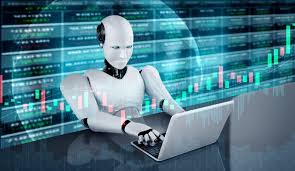In the dynamic realm of financial markets, where every second counts and decisions are often made in the blink of an eye, technology has revolutionized the landscape of trading. Among the myriad tools and strategies available to traders, one innovation forex robot: the Forex robot. These automated systems have garnered significant attention for their ability to execute trades swiftly and efficiently, promising to unlock new avenues of profit in the foreign exchange (forex) market.
Forex robots, also known as Expert Advisors (EAs), are software programs designed to analyze market conditions, identify trading opportunities, and execute trades on behalf of the user. Leveraging complex algorithms and mathematical models, these robots aim to remove human emotion and subjectivity from trading, theoretically leading to more disciplined and consistent results.
The appeal of forex robots lies in their potential to capitalize on market inefficiencies and fluctuations round the clock, without the need for constant monitoring or intervention by the trader. This 24/7 availability opens up possibilities for traders to explore different time zones and currency pairs, catering to various trading styles and preferences.
One of the primary advantages touted by proponents of forex robots is their ability to eliminate the psychological pitfalls that often plague human traders. Emotions such as fear, greed, and indecision can lead to impulsive or irrational decision-making, resulting in losses. By automating the trading process, robots adhere strictly to predefined rules and parameters, helping to maintain discipline and consistency over time.
Furthermore, forex robots have the potential to execute trades with incredible speed and precision, reacting to market conditions in milliseconds. This can be especially advantageous in fast-moving markets or during news events when opportunities arise and vanish rapidly. By automating the execution process, traders can capitalize on these opportunities without hesitation or delay.
However, it’s important to acknowledge that forex robots are not infallible, and their effectiveness can vary depending on numerous factors. Market conditions, algorithm performance, broker execution speed, and risk management settings all play crucial roles in determining the success of these automated systems.
Moreover, the inherent complexity of financial markets means that no algorithm can guarantee consistent profits. While forex robots may excel in certain market conditions, they can falter in others, leading to periods of drawdown or losses. Additionally, the risk of technical glitches or system failures cannot be overlooked, highlighting the importance of thorough testing and monitoring.
Another consideration is the potential for over-optimization, wherein the robot’s parameters are fine-tuned to historical data, leading to impressive backtest results but faltering in real-world trading. Traders must exercise caution and avoid falling into the trap of chasing past performance without considering the broader market context.
Despite these challenges, forex robots continue to attract interest from traders seeking to automate their trading strategies and capitalize on market opportunities. As technology continues to evolve, so too will the capabilities of these automated systems, potentially unlocking new levels of efficiency and profitability in the forex market.
In conclusion, forex robots represent a compelling tool for traders looking to streamline their trading processes and harness the power of automation. While they offer numerous advantages, including emotion-free trading and round-the-clock availability, traders must approach them with caution, recognizing their limitations and conducting thorough research and testing before incorporating them into their trading arsenal. By striking the right balance between automation and human oversight, traders can leverage forex robots to potentially enhance their trading performance in the dynamic world of foreign exchange.
